The demand for vision care in the USA is expected to grow from USD 37.2 billion in 2025 to USD 71.5 billion by 2035, reflecting a CAGR of 6.7%. The vision care market includes a wide range of products and services, including eyeglasses, contact lenses, surgical procedures, and vision correction treatments. The growth in demand is driven by several factors, including an aging population, rising vision-related issues from increased screen time, and the growing need for preventive care. As more people seek solutions for refractive errors, cataracts, and glaucoma, the vision care industry will continue to expand.
Technological advancements in vision correction, such as laser surgeries, and innovations in eye health products like blue light filters and advanced contact lenses, will further drive demand. Additionally, increasing awareness of the importance of eye health, the rise of e-commerce in eye care products, and expanding insurance coverage for vision-related treatments will contribute to continued market growth over the next decade.
The market growth curve for vision care in the USA shows steady and consistent growth throughout the 2025–2035 forecast period, with a moderate acceleration in the early years followed by stable expansion. From 2025 to 2030, the demand will increase from USD 37.2 billion to USD 51.6 billion, contributing USD 14.4 billion in value. This early growth phase will be driven by the increasing prevalence of vision problems due to the aging population and the rise of screen-related eye strain. During this period, there will be a moderate acceleration as more people seek vision correction treatments and preventive solutions.
From 2030 to 2035, the market will grow from USD 51.6 billion to USD 71.5 billion, adding USD 19.9 billion in value. The growth curve during this period will remain steady but strong, with continued demand for advanced vision care products and services. The latter phase will see the maturation of the market, where growth remains robust but steady as the focus shifts to advanced treatments for age-related vision conditions and improved accessibility to vision care services. The market will continue to be driven by innovations in eye health, surgical treatments, and a growing consumer focus on maintaining eye health in a digital age. The curve suggests that long-term growth will be sustained due to an ongoing need for vision correction and eye health management.
| Metric | Value |
|---|---|
| USA Vision Care Industry Sales Value (2025) | USD 37.2 billion |
| USA Vision Care Industry Forecast Value (2035) | USD 71.5 billion |
| USA Vision Care Industry Forecast CAGR (2025-2035) | 6.7% |
Demand for vision care in the USA is increasing as the population ages, screen time rises and awareness of ocular health grows. With over 54 million adults aged 65 and older, age related vision disorders such as cataracts, glaucoma and presbyopia are fuelling demand for corrective eyewear, contact lenses, surgical treatments and regular eye examinations. Additionally, the widespread use of digital devices has led to higher incidence of digital eye strain and myopia in younger age groups, prompting increased uptake of eyewear designed for digital comfort, blue light filtering and vision correction.
Another key driver is improved access to vision care products and services through both retail and online channels, coupled with technological innovation in optics and diagnostics. Advancements such as premium intraocular lenses, smart eyewear, tele optometry and personalized lenses enhance appeal to both traditional patients and wellness oriented consumers. Despite this growth, challenges remain including variations in insurance coverage, affordability issues and competition from alternative vision correction methods like refractive surgery. Nonetheless, the combination of demographic change, lifestyle trends and innovation suggests that demand for vision care in the USA will continue to grow.
The demand for vision care products in the USA is driven by product type and distribution channel. The leading product type is spectacle lenses, holding 51% of the market share, while optometry stores are the dominant distribution channel, accounting for 38% of the demand. Vision care products, including spectacle lenses, contact lenses, and cleaning solutions, play a critical role in improving quality of life by enhancing vision and eye health. The growing awareness of eye care, along with advancements in vision correction technologies, continues to drive the market.
Spectacle lenses dominate the vision care market in the USA, capturing 51% of the demand. As one of the most widely used vision correction products, spectacle lenses are essential for individuals with refractive errors such as nearsightedness, farsightedness, and astigmatism. The continued demand for spectacle lenses is driven by factors such as aging populations, increased screen time, and growing awareness of eye health. Advances in lens technology, such as blue light filtering, photochromic lenses, and lenses designed for specific conditions like presbyopia, have expanded the range of options available to consumers.
In addition to their widespread use for correcting vision, spectacle lenses are becoming more of a fashion accessory, with a growing emphasis on stylish frames and lens designs. As consumers seek both functional and aesthetic solutions, the market for spectacle lenses remains strong. The ongoing demand for eye care solutions, driven by an aging population and increasing concerns over digital eye strain, ensures that spectacle lenses continue to lead the vision care market in the USA.
Optometry stores are the leading distribution channel for vision care products in the USA, accounting for 38% of the demand. These stores are the primary point of contact for consumers seeking professional eye exams, prescription eyewear, and vision care solutions. Optometry stores provide a range of services, including eye tests, consultations, and fittings for both spectacle and contact lenses, making them a central hub for vision care products.
The demand for optometry stores is driven by the need for regular eye check-ups, professional advice, and accurate prescription services. These stores are preferred by many consumers for their ability to offer personalized services and a wide selection of vision correction products. As the population continues to age and awareness of eye health grows, optometry stores are expected to remain a dominant force in the distribution of vision care products, providing not only products but essential services that contribute to long-term eye health.
Demand for vision care in the U.S. is driven by rising prevalence of refractive errors, age related eye conditions and digital screen induced vision strain, while also influenced by consumer wellness focus and evolving retail formats. At the same time, high equipment and provider costs, insurance gaps and service access disparities act as constraints. Emerging trends include growth in tele optometry, digitised eyewear retailing and smart corrective devices. The interaction of these drivers, restraints and trends shapes market uptake of eyewear, contact lenses, diagnostics and vision care services.
What Are the Primary Growth Drivers for Vision Care Demand in the United States?
Growth in U.S. vision care demand is supported by several factors. First, the ageing population increases incidence of cataract, macular degeneration and presbyopia, creating sustained need for corrective devices and interventions. Second, greater screen time and digital device USAge among all ages raise demand for lenses, blue light filters and eye strain relief products. Third, heightened consumer interest in eye health and aesthetic eyewear expands retail volumes of glasses, sunglasses and contact lenses. Fourth, innovations in diagnostics and lifestyle oriented vision solutions (for example smart glasses, online eye tests) broaden access and product adoption across younger and older segments.
What Are the Key Restraints Affecting Vision Care Demand in the United States?
Despite positive drivers, demand faces constraints. Cost remains a barrier, as advanced corrective lenses, surgeries and diagnostic services can be expensive and may not be fully covered by vision insurance, limiting uptake. Access disparities affect rural and underserved areas where optometrist visits or retail optical services are less available. Market saturation in standard eyewear for routine correction slows incremental growth, placing more pressure on premium or specialty segments. In addition, consumer inertia-such as delay in seeking refraction updates or avoidance of regular eye exams-reduces potential penetration of the full vision care product and service set.
What Are the Key Trends Shaping Vision Care Demand in the United States?
Major trends shaping U.S. vision care include increased uptake of tele optometry and online eyewear retail, enabling remote eye exams and direct to consumer glasses purchases. Smart eyewear and digitally integrated lenses-such as those with augmented reality features or connectivity-are gaining traction. Customisation and premiumisation in eyewear design (frames, coatings, lifestyle brands) elevate consumer spending per unit. There is also rising interest in preventive eye health products and services that address digital screen related strain or myopia progression in children. Furthermore, consolidation in retail optical chains and subscription based vision care models enhance service accessibility and business scalability.
The demand for vision care in the USA is growing as an increasing number of individuals seek to maintain eye health and address common vision problems such as nearsightedness, farsightedness, and age-related macular degeneration. Factors such as an aging population, increased screen time, and heightened awareness about eye health are contributing to the rising demand for vision care products and services. Vision care includes a wide range of solutions, from eye exams and prescription glasses to contact lenses and surgical treatments like LASIK. The growing prevalence of conditions like digital eye strain, combined with a greater focus on preventive healthcare, is also driving the market.
Regional variations in demand are influenced by factors such as population demographics, healthcare accessibility, and consumer awareness. The West leads in demand, supported by a large, health-conscious population and technological adoption, followed by the South, Northeast, and Midwest, with steady adoption driven by regional population dynamics and healthcare priorities. This analysis explores the regional drivers behind the demand for vision care across the USA.
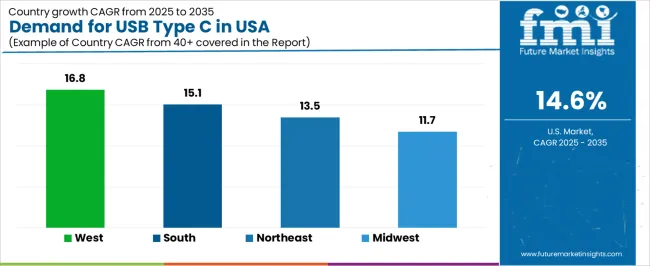
| Region | CAGR (2025-2035) |
|---|---|
| West | 7.8% |
| South | 6.9% |
| Northeast | 6.2% |
| Midwest | 5.4% |
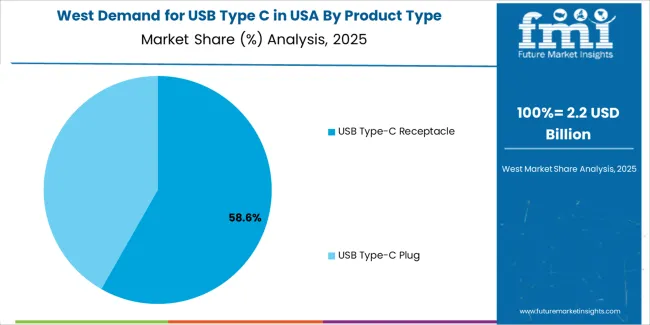
The West region leads the USA in vision care demand with a CAGR of 7.8%. The region's health-conscious population, high level of healthcare accessibility, and growing focus on wellness are major contributors to this trend. States like California, Washington, and Oregon are home to a large, diverse population that prioritizes health and preventive care, which increases the demand for regular eye exams, vision correction, and other vision care services.
In addition, the West is home to several tech hubs, including Silicon Valley, where screen time is particularly high due to the nature of work in the tech industry. As digital eye strain becomes more prevalent, consumers are increasingly seeking vision care solutions to mitigate the effects of prolonged screen exposure. The region's progressive approach to healthcare, combined with an aging population and growing awareness of the importance of eye health, ensures continued strong demand for vision care services and products.
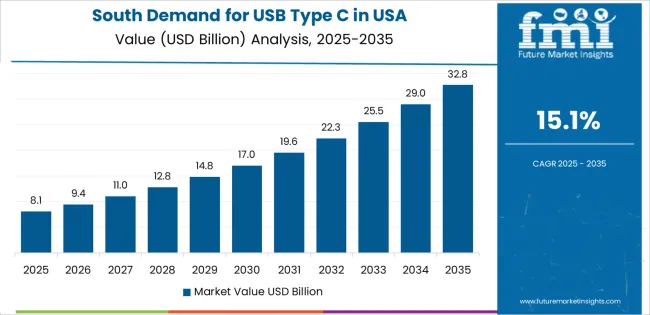
The South shows strong demand for vision care with a CAGR of 6.9%. The South has a large and diverse population, which contributes to the steady adoption of vision care products and services. States like Texas, Florida, and Georgia are home to significant numbers of aging individuals, who are more likely to require vision care services such as cataract surgery, prescription glasses, and contact lenses.
The South's growing focus on health, along with increased access to healthcare services in urban areas, drives demand for preventive eye care and treatments. The region’s emphasis on healthcare expansion, particularly in underserved rural areas, will likely continue to boost the adoption of vision care products and services. As more people seek solutions for age-related eye conditions and digital eye strain, demand for vision care in the South will continue to grow steadily.
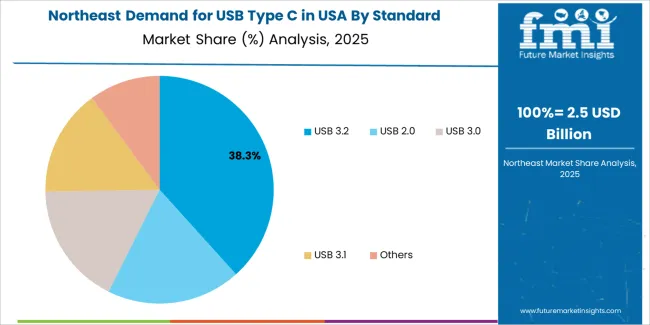
The Northeast demonstrates steady demand for vision care with a CAGR of 6.2%. The region has a large, dense population with high levels of access to healthcare, making it a key market for vision care services. Cities like New York and Boston are home to leading healthcare institutions and a highly educated, health-conscious population, which drives the demand for regular eye exams and vision correction solutions.
The growing focus on aging populations in the Northeast, particularly in urban and suburban areas, is contributing to the demand for vision care. Additionally, the region’s high levels of screen time due to work and educational demands are driving the need for solutions to manage digital eye strain. The combination of accessibility to healthcare and the increasing awareness of eye health ensures steady growth in vision care demand across the Northeast.
The Midwest shows moderate growth in vision care demand with a CAGR of 5.4%. The region, while not experiencing growth as fast as the West or South, still demonstrates steady adoption of vision care services due to the aging population and rising awareness about eye health. States like Illinois, Michigan, and Ohio have a large number of people in need of eye care services, particularly among the elderly, who often require vision correction or treatment for conditions such as cataracts and macular degeneration.
While there is growing awareness of digital eye strain, the Midwest lags slightly behind in the adoption of modern vision care products compared to more urbanized regions like the West and Northeast. However, as healthcare access improves and the focus on preventive care continues to rise, the Midwest will see steady demand for vision care services and products in the coming years.
The vision care industry in the United States is experiencing steady growth, driven by rising awareness of eye health, the aging population, and advancements in corrective eyewear and eye care solutions. Companies like Bausch and Lomb (holding approximately 25.2% market share), Luxottica Group, Essilor, and ZEISS International are key players in this industry, offering a wide range of products including prescription lenses, contact lenses, optical frames, and surgical instruments. The demand for vision care products is further fueled by increasing rates of refractive errors, such as myopia and presbyopia, and the growing prevalence of digital eye strain due to prolonged screen time.
Competition in the vision care industry is primarily driven by product innovation, brand differentiation, and service offerings. Companies are focusing on developing advanced lens technologies, such as anti-reflective coatings, blue light filtering lenses, and progressive lenses, to enhance consumer comfort and vision clarity. Another area of competition is the expansion of distribution channels, with companies investing in direct-to-consumer models, partnerships with optical retailers, and digital platforms to provide easier access to products. Additionally, there is a growing trend toward integrating smart technology into eyewear, including smart glasses and lenses with augmented reality features. Marketing materials typically highlight features such as lens customization options, durability, UV protection, and overall eye health benefits. By aligning their products with the increasing consumer demand for convenience, innovation, and eye health, these companies aim to strengthen their position in the U.S. vision care industry.
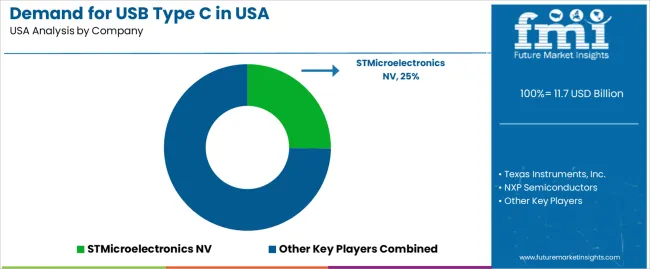
| Items | Details |
|---|---|
| Quantitative Units | USD Billion |
| Regions Covered | USA |
| Product Type | Spectacle Lenses, Contact Lenses, Cleaning & Disinfecting Solutions |
| Distribution Channel | Optometry Stores, Hospitals, Ophthalmic Clinics, E-Commerce, Retail Hypermarket/Superstore |
| Key Companies Profiled | Bausch and Lomb, LUXOTTICA GROUP, Essilor, ZEISS International |
| Additional Attributes | The market analysis includes dollar sales by product type and distribution channel categories. It also covers regional demand trends in the United States, driven by the growing need for corrective eyewear and vision care solutions. The competitive landscape highlights major players in the vision care industry, focusing on innovations in lenses, cleaning solutions, and advanced vision correction technologies. Trends in the increasing adoption of online sales channels and the role of e-commerce in driving market growth are explored, along with advancements in lens materials and design. |
The global demand for vision care in USA is estimated to be valued at USD 37.2 billion in 2025.
The market size for the demand for vision care in USA is projected to reach USD 71.5 billion by 2035.
The demand for vision care in USA is expected to grow at a 6.7% CAGR between 2025 and 2035.
The key product types in demand for vision care in USA are spectacle lenses, contact lenses and cleaning & disinfecting solutions.
In terms of distribution channel, optometry stores segment to command 38.0% share in the demand for vision care in USA in 2025.






Our Research Products

The "Full Research Suite" delivers actionable market intel, deep dives on markets or technologies, so clients act faster, cut risk, and unlock growth.

The Leaderboard benchmarks and ranks top vendors, classifying them as Established Leaders, Leading Challengers, or Disruptors & Challengers.

Locates where complements amplify value and substitutes erode it, forecasting net impact by horizon

We deliver granular, decision-grade intel: market sizing, 5-year forecasts, pricing, adoption, usage, revenue, and operational KPIs—plus competitor tracking, regulation, and value chains—across 60 countries broadly.

Spot the shifts before they hit your P&L. We track inflection points, adoption curves, pricing moves, and ecosystem plays to show where demand is heading, why it is changing, and what to do next across high-growth markets and disruptive tech

Real-time reads of user behavior. We track shifting priorities, perceptions of today’s and next-gen services, and provider experience, then pace how fast tech moves from trial to adoption, blending buyer, consumer, and channel inputs with social signals (#WhySwitch, #UX).

Partner with our analyst team to build a custom report designed around your business priorities. From analysing market trends to assessing competitors or crafting bespoke datasets, we tailor insights to your needs.
Supplier Intelligence
Discovery & Profiling
Capacity & Footprint
Performance & Risk
Compliance & Governance
Commercial Readiness
Who Supplies Whom
Scorecards & Shortlists
Playbooks & Docs
Category Intelligence
Definition & Scope
Demand & Use Cases
Cost Drivers
Market Structure
Supply Chain Map
Trade & Policy
Operating Norms
Deliverables
Buyer Intelligence
Account Basics
Spend & Scope
Procurement Model
Vendor Requirements
Terms & Policies
Entry Strategy
Pain Points & Triggers
Outputs
Pricing Analysis
Benchmarks
Trends
Should-Cost
Indexation
Landed Cost
Commercial Terms
Deliverables
Brand Analysis
Positioning & Value Prop
Share & Presence
Customer Evidence
Go-to-Market
Digital & Reputation
Compliance & Trust
KPIs & Gaps
Outputs
Full Research Suite comprises of:
Market outlook & trends analysis
Interviews & case studies
Strategic recommendations
Vendor profiles & capabilities analysis
5-year forecasts
8 regions and 60+ country-level data splits
Market segment data splits
12 months of continuous data updates
DELIVERED AS:
PDF EXCEL ONLINE
Demand Signal Repository Solutions Market Size and Share Forecast Outlook 2025 to 2035
Demand Side Management Market Size and Share Forecast Outlook 2025 to 2035
Demand Response Market Analysis - Size, Share, and Forecast Outlook 2025 to 2035
North America Shipping Supplies Market Trends – Innovations & Growth 2024-2034
Demand of Kozani Saffron in Greece Analysis - Size, Share & Forecast 2025 to 2035
Demand of No-acid Whey Strained Dairy Processing Concepts in European Union Size and Share Forecast Outlook 2025 to 2035
Demand for Bronte Pistachio in Italy Analysis - Size, Share & Forecast 2025 to 2035
Demand and Trend Analysis of Gaming Monitor in Western Europe Size and Share Forecast Outlook 2025 to 2035
Demand and Trend Analysis of Gaming Monitor in Japan Size and Share Forecast Outlook 2025 to 2035
Demand and Trend Analysis of Gaming Monitor in Korea Size and Share Forecast Outlook 2025 to 2035
Glycine Soja (Soybean) Seed Extract Market Size and Share Forecast Outlook 2025 to 2035
Demand and Trend Analysis of Yeast in Japan - Size, Share, and Forecast Outlook 2025 to 2035
Demand and Trends Analysis of Stevia in Japan Size and Share Forecast Outlook 2025 to 2035
Demand of Pistachio-based desserts & ingredients in France Analysis - Size, Share & Forecast 2025 to 2035
Demand and Trend Analysis of Fabric Stain Remover in Korea Size and Share Forecast Outlook 2025 to 2035
Demand and Sales Analysis of Paper Cup in Japan Size and Share Forecast Outlook 2025 to 2035
Demand and Sales Analysis of Paper Cup in Korea Size and Share Forecast Outlook 2025 to 2035
Demand and Sales Analysis of Paper Cup in Western Europe Size and Share Forecast Outlook 2025 to 2035
Demand of MFGM-enriched Powders & RTDs in European Union Size and Share Forecast Outlook 2025 to 2035
Demand and Trend Analysis of Avocado Oil in Western europe Size and Share Forecast Outlook 2025 to 2035

Thank you!
You will receive an email from our Business Development Manager. Please be sure to check your SPAM/JUNK folder too.
Chat With
MaRIA